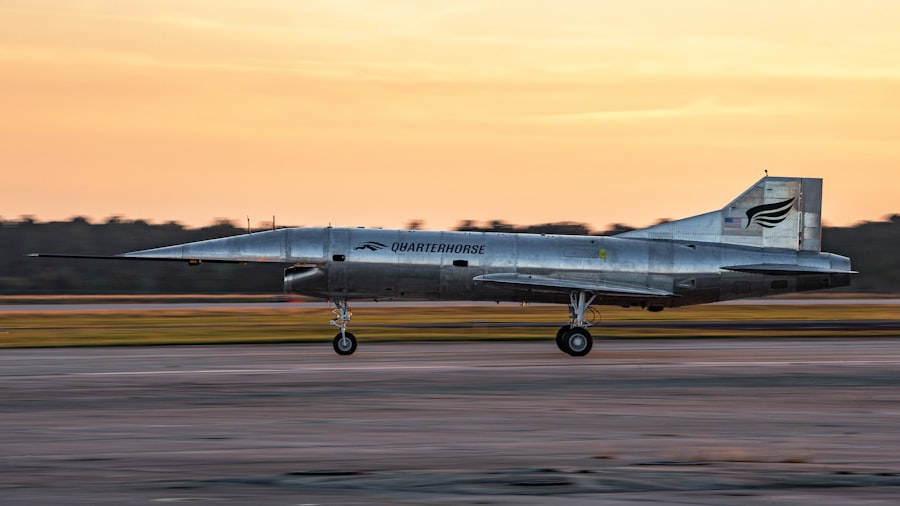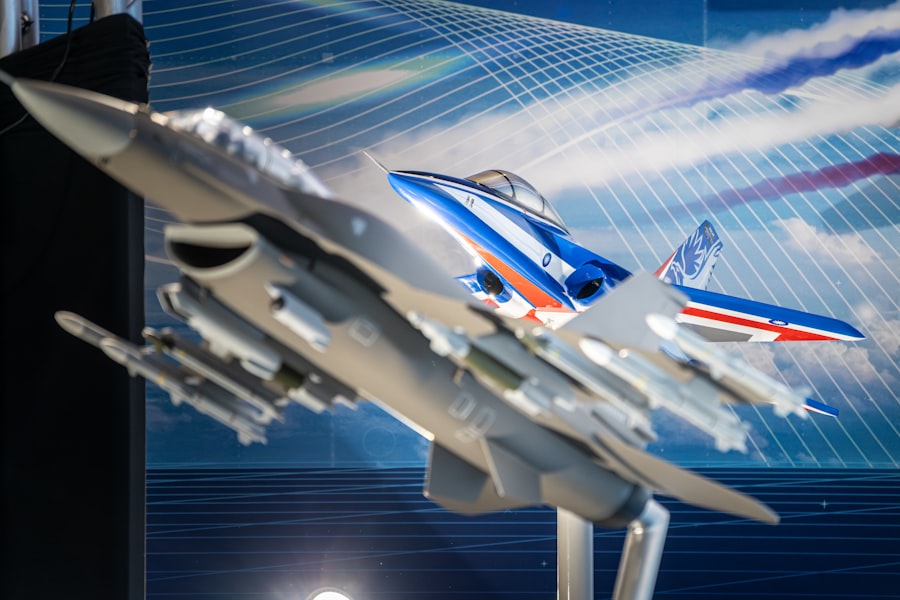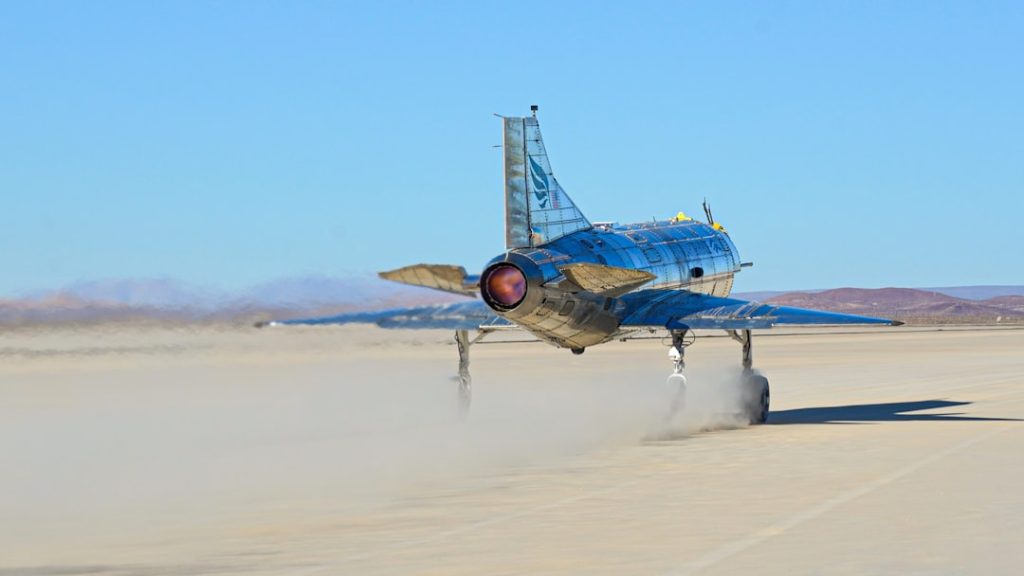The United States has long been a leader in aerospace and defense technology, a sector that encompasses a wide range of activities, from the design and manufacture of military aircraft to the development of advanced satellite systems. This industry is not only crucial for national security but also plays a significant role in the global economy. The U.S. aerospace and defense sector is characterized by its innovative spirit, driven by both government and private sector investments. The interplay between military needs and technological advancements has led to groundbreaking developments that have reshaped the landscape of modern warfare and space exploration. The U.S. government, through agencies such as the Department of Defense (DoD) and NASA, has historically funded research and development initiatives that push the boundaries of what is possible in aerospace technology. This investment has resulted in a robust ecosystem that includes major defense contractors like Lockheed Martin, Boeing, and Northrop Grumman, as well as numerous smaller firms and startups. The collaboration between these entities fosters an environment ripe for innovation, where cutting-edge technologies are rapidly developed and deployed to meet evolving threats and challenges.
Key Takeaways
- US Aerospace and Defense Technology has played a crucial role in shaping the country’s military capabilities and global influence.
- Military aircraft and spacecraft have evolved significantly over the years, from early propeller-driven planes to advanced stealth fighters and space exploration vehicles.
- Innovations in weaponry and defense systems have led to the development of precision-guided munitions, unmanned aerial vehicles, and advanced missile defense systems.
- Advancements in communication and surveillance technology have enhanced situational awareness and intelligence gathering capabilities for military operations.
- The integration of artificial intelligence and robotics has revolutionized aerospace and defense technology, leading to autonomous systems and unmanned combat vehicles.
The Evolution of Military Aircraft and Spacecraft
The evolution of military aircraft has been marked by significant technological advancements that have transformed aerial combat. From the biplanes of World War I to the stealth bombers of the 21st century, each generation of military aircraft has introduced new capabilities that enhance operational effectiveness. The introduction of jet propulsion during World War II revolutionized air combat, allowing for faster speeds and greater maneuverability.
The subsequent Cold War era saw the development of supersonic fighters and bombers, such as the F-15 Eagle and B-1 Lancer, which incorporated advanced avionics and weapon systems. In parallel, the evolution of spacecraft has been equally remarkable. The U.S.
space program began with the launch of Explorer 1 in 1958, marking the country’s entry into the space race. Over the decades, missions have evolved from simple satellite deployments to complex interplanetary explorations. The Space Shuttle program, which operated from 1981 to 2011, exemplified this evolution by enabling reusable spacecraft capable of carrying astronauts and cargo to low Earth orbit.
Today, initiatives like NASA’s Artemis program aim to return humans to the Moon and eventually send astronauts to Mars, showcasing the ongoing commitment to pushing the boundaries of human exploration beyond our planet.
Innovations in Weaponry and Defense Systems

The landscape of weaponry has undergone a dramatic transformation over the past few decades, driven by technological advancements that enhance precision, lethality, and effectiveness. One notable innovation is the development of precision-guided munitions (PGMs), which allow for targeted strikes with minimal collateral damage. These weapons utilize advanced guidance systems, such as GPS and laser targeting, to ensure accuracy in various combat scenarios.
The use of PGMs during conflicts like the Gulf War demonstrated their effectiveness in achieving military objectives while reducing civilian casualties. In addition to PGMs, advancements in missile defense systems have become a critical component of national security strategy. The U.S.
has invested heavily in systems like the Aegis Ballistic Missile Defense System and the Terminal High Altitude Area Defense (THAAD), which are designed to intercept and destroy incoming ballistic missiles. These systems leverage sophisticated radar technology and interceptor missiles to provide a multi-layered defense against aerial threats. The ongoing development of hypersonic weapons further complicates defense strategies, as these missiles can travel at speeds exceeding Mach 5, making them difficult to detect and intercept.
Advancements in Communication and Surveillance Technology
| Technology | Advancement |
|---|---|
| 5G Networks | Increased data transfer speeds |
| Internet of Things (IoT) | Enhanced connectivity and automation |
| Artificial Intelligence (AI) | Improved data analysis and decision making |
| Surveillance Cameras | Higher resolution and real-time monitoring |
| Biometric Identification | Enhanced security and accuracy |
Effective communication and surveillance are paramount in modern military operations, where real-time information can dictate the success or failure of missions. The U.S. has made significant strides in developing advanced communication systems that facilitate seamless connectivity among military units.
Secure satellite communications enable troops to maintain contact with command centers regardless of their location, ensuring that critical information flows freely across various platforms. Surveillance technology has also evolved dramatically, with the integration of unmanned aerial vehicles (UAVs) playing a pivotal role in intelligence gathering. Drones like the MQ-9 Reaper provide real-time reconnaissance capabilities while minimizing risk to personnel.
These UAVs are equipped with high-resolution cameras and sensors that can capture detailed imagery and data from vast areas, allowing for enhanced situational awareness on the battlefield. Additionally, advancements in artificial intelligence are being leveraged to analyze vast amounts of surveillance data quickly, enabling military leaders to make informed decisions based on actionable intelligence.
The Impact of Artificial Intelligence and Robotics in Aerospace and Defense
Artificial intelligence (AI) and robotics are transforming the aerospace and defense sectors by introducing capabilities that were once considered science fiction. AI algorithms are being employed to enhance decision-making processes, automate routine tasks, and improve operational efficiency. For instance, AI-driven systems can analyze data from various sources—such as satellite imagery, social media feeds, and sensor inputs—to identify potential threats or emerging patterns that may require attention.
Robotics is also playing an increasingly vital role in military operations. Autonomous systems are being developed for various applications, including logistics support, bomb disposal, and reconnaissance missions. These robots can operate in environments that are too dangerous for human personnel, thereby reducing risk while maintaining operational effectiveness.
The U.S. military’s investment in robotic technologies reflects a broader trend toward automation in warfare, where machines can complement human capabilities on the battlefield.
The Role of Cybersecurity in National Defense

As reliance on digital technologies increases within the aerospace and defense sectors, cybersecurity has emerged as a critical component of national defense strategy. Cyber threats pose significant risks to military operations, with adversaries seeking to exploit vulnerabilities in networks and systems to gain an advantage. The U.S. Department of Defense has recognized this challenge and is actively working to bolster its cybersecurity posture through various initiatives. One key aspect of cybersecurity in defense is the protection of sensitive information related to military operations and capabilities. Cybersecurity measures must be implemented at all levels—from individual devices to large-scale networks—to safeguard against data breaches that could compromise national security. Additionally, the U.S. military conducts regular cyber exercises to simulate potential attacks and assess its readiness to respond effectively to cyber threats.
Future Trends and Developments in US Aerospace and Defense Technology
Looking ahead, several trends are poised to shape the future of U.S. aerospace and defense technology. One significant area of focus is hypersonic technology, which promises to revolutionize both offensive and defensive capabilities.
As nations race to develop hypersonic weapons that can evade traditional missile defense systems, the U.S. is investing heavily in research to maintain its technological edge. Another trend is the increasing emphasis on joint operations among allied nations.
As global threats become more complex, collaboration between military forces from different countries will be essential for effective responses. This shift is reflected in initiatives like NATO’s Enhanced Forward Presence, which aims to strengthen collective defense through interoperability among member states’ forces. Moreover, sustainability is becoming an important consideration within aerospace and defense sectors as environmental concerns gain prominence globally.
Efforts are underway to develop greener technologies for aircraft propulsion and reduce the carbon footprint associated with military operations.
The Ethical and Moral Implications of Advanced Military Technology
The rapid advancement of military technology raises profound ethical and moral questions that society must grapple with as it navigates this new landscape. The deployment of autonomous weapons systems—machines capable of making life-and-death decisions without human intervention—has sparked intense debate about accountability and responsibility in warfare. Critics argue that delegating such critical decisions to machines could lead to unintended consequences or escalation of conflicts without proper oversight.
Additionally, the use of surveillance technologies raises concerns about privacy rights and civil liberties. As governments increasingly rely on data collection for national security purposes, there is a fine line between ensuring safety and infringing upon individual freedoms. Striking a balance between security needs and ethical considerations will be crucial as technology continues to evolve.
In conclusion, while advancements in aerospace and defense technology offer significant benefits for national security, they also necessitate careful consideration of their implications on society at large. As these technologies continue to develop, ongoing dialogue among policymakers, ethicists, technologists, and the public will be essential in shaping a future that prioritizes both security and ethical responsibility.


